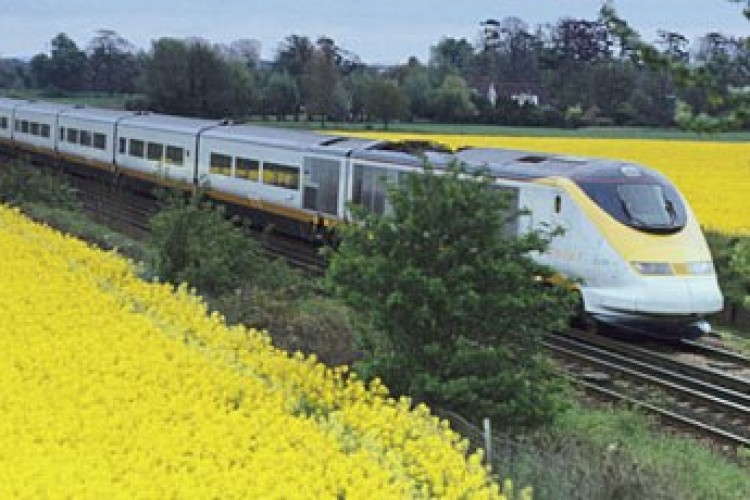However, it is highly unlikely to be enough to see off all opposition to the scheme when consultation begins in a the next few weeks. Local authorities, residents groups and lobby organisations are lining up to protect their interests.
The new High Speed 2 line is planned to be part of a high speed rail network that will link London to the West Midlands, Manchester and Leeds, with a direct link to Heathrow airport and to the mainland European high speed rail network. The project is being developed by HS2 Ltd, a company set up for this purpose by the Department of Transport.
The completed 'Y'-shaped network would bring Birmingham within about half an hour of London and would allow journey times of around 80 minutes from Leeds and Manchester to the capital. Connections onto existing tracks would also be included, allowing direct high speed train services to be operated to cities including Glasgow, Edinburgh, Newcastle and Liverpool. A direct link to Britain's existing high speed line, High Speed 1 - which runs from London St Pancras to the channel tunnel - would allow travel from cities along the new high speed line to the continent, while construction of a direct link to Heathrow airport - to be built at the same time as the lines to Leeds and Manchester - would enable direct high speed services to run to and from the airport, providing an attractive alternative for many short-haul air journeys. In addition, the released capacity on the West Coast Mainline would offer the possibility of more frequent, fast commuter services from places such as Milton Keynes and Coventry.
Transport Secretary Philip Hammond said: “A rail network of this kind has huge potential to reshape our economic geography for the better. But I also know there will be less welcome impacts of this new line in some parts of the countryside. Since taking this job I have reviewed all the possible route options in detail as well as travelling the length of the proposed line to talk directly to local people. As a result, I have made a number of changes to the route published by the previous government. The route I am publishing today differs from the previous one for around 65 out of the 127 miles of its length.
"We are continuing to look at additional mitigation measures to lessen the impact of the line on those communities which it passes nearest to, as well as considering innovative options for providing assistance to those who may be affected by the proposed line. I hope the communities affected will play a full part in the consultation process."
Maps of the new route have been published and full public consultation on the route - as well as on the government's broader strategy on high speed rail - begins in February.

Significant changes to the route published by the previous Labour government include:
- At Primrose Hill in London, where work to identify the most appropriate locations for the necessary vent shafts has shifted the proposed tunnel, and the vent shafts themselves, to the north, locating them alongside the existing railway.
- Between Amersham and Wendover, where a green bridge and a green tunnel have been incorporated into the route design to reduce its visual impact and avoid severance of public rights of way.
- At Hartwell House in Buckinghamshire, where by moving the alignment away from this historic property, HS2 Ltd have been able to ensure that the line would not be visible from the House itself and that additional earthworks and planting can be undertaken to further reduce its visual and noise impacts.
- At Edgcote House to the north of Aylesbury, where HS2 Ltd have made adjustments which move the proposed line further away from the property and its gardens, without increasing its impact on nearby villages.
- At Lichfield where an improved alignment would move the line further from the city, whilst avoiding any increased impact on other local communities.
The government proposes to secure the powers to deliver the high speed network by means of a hybrid bill. Depending on the outcome of consultation and parliamentary timescales and approval, enabling works for the initial London-Birmingham phase could begin in 2015 with the high speed network opening in phases from 2026.
The government's proposed route for the London-Birmingham line will run from a rebuilt Euston station to a new Birmingham City Centre station at Fazeley Street. A Crossrail interchange station would be built at Old Oak Common in West London, giving the new line direct connections to the West End, City and Docklands via Crossrail, to the South West via the Great Western main line and to Heathrow via the Heathrow Express. A second interchange station could also be located to the south east of Birmingham - offering direct links to Birmingham Airport, the National Exhibition Centre and the M6 and M42.
To provide the direct link to High Speed 1 (HS1 – the Channel tunnel rail link), a tunnel would be dug from Old Oak Common to the existing North London Line near Chalk Farm, from where existing infrastructure can be used to reach the HS1 line north of St Pancras.
Further work has been commissioned from HS2 Ltd to develop more detailed route proposals for the Heathrow spur, however this is expected to broadly follow the M25 corridor south from the main London-Birmingham line before accessing the airport. The final route proposal is expected to be subject to public consultation later this Parliament alongside the routes for the proposed Manchester and Leeds legs.
Detailed maps are available at: http://www.dft.gov.uk/pgr/rail/pi/highspeedrail/proposedroute/
Got a story? Email news@theconstructionindex.co.uk
.png)


